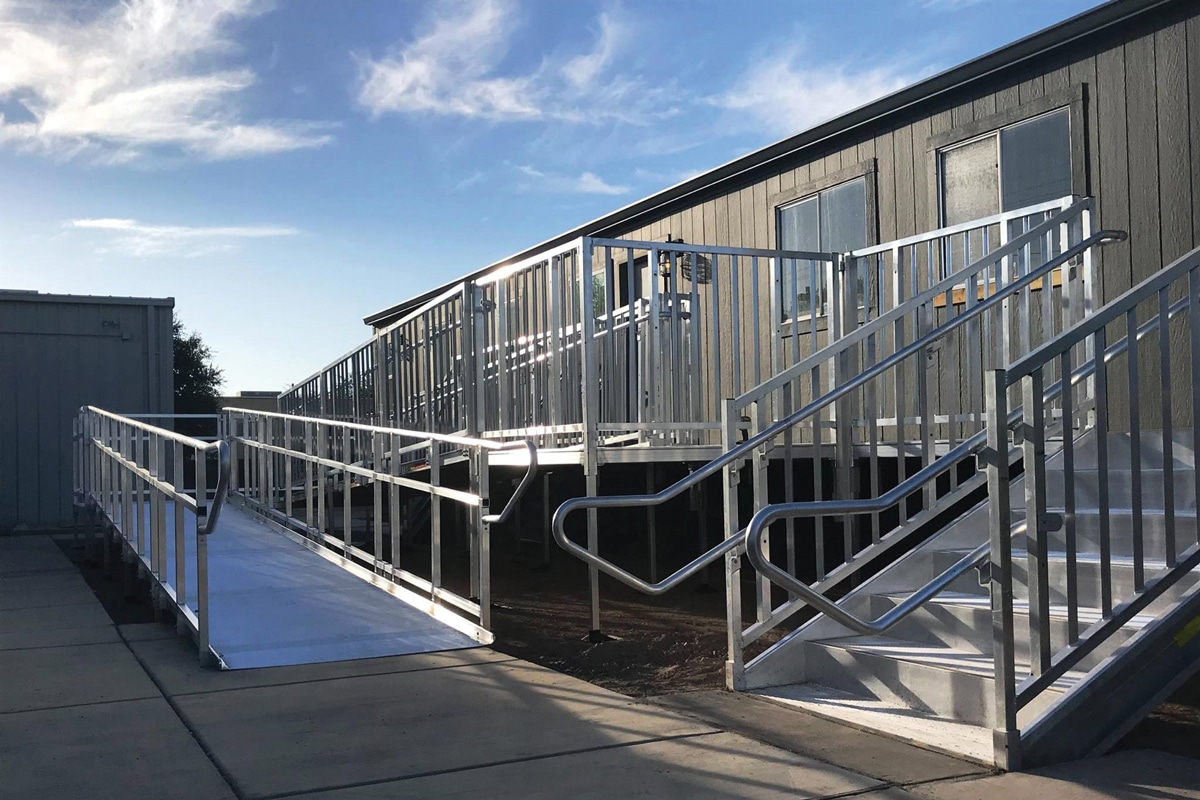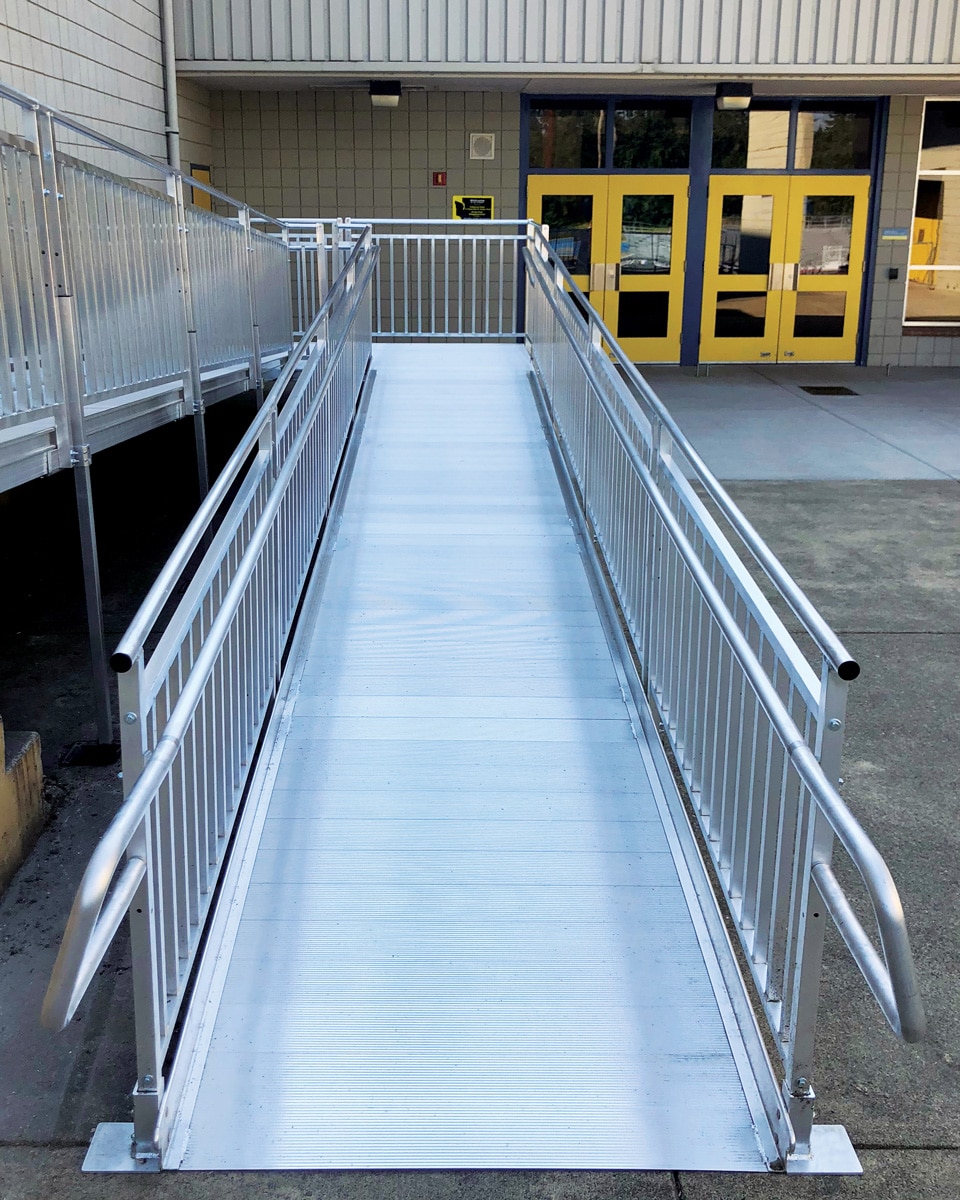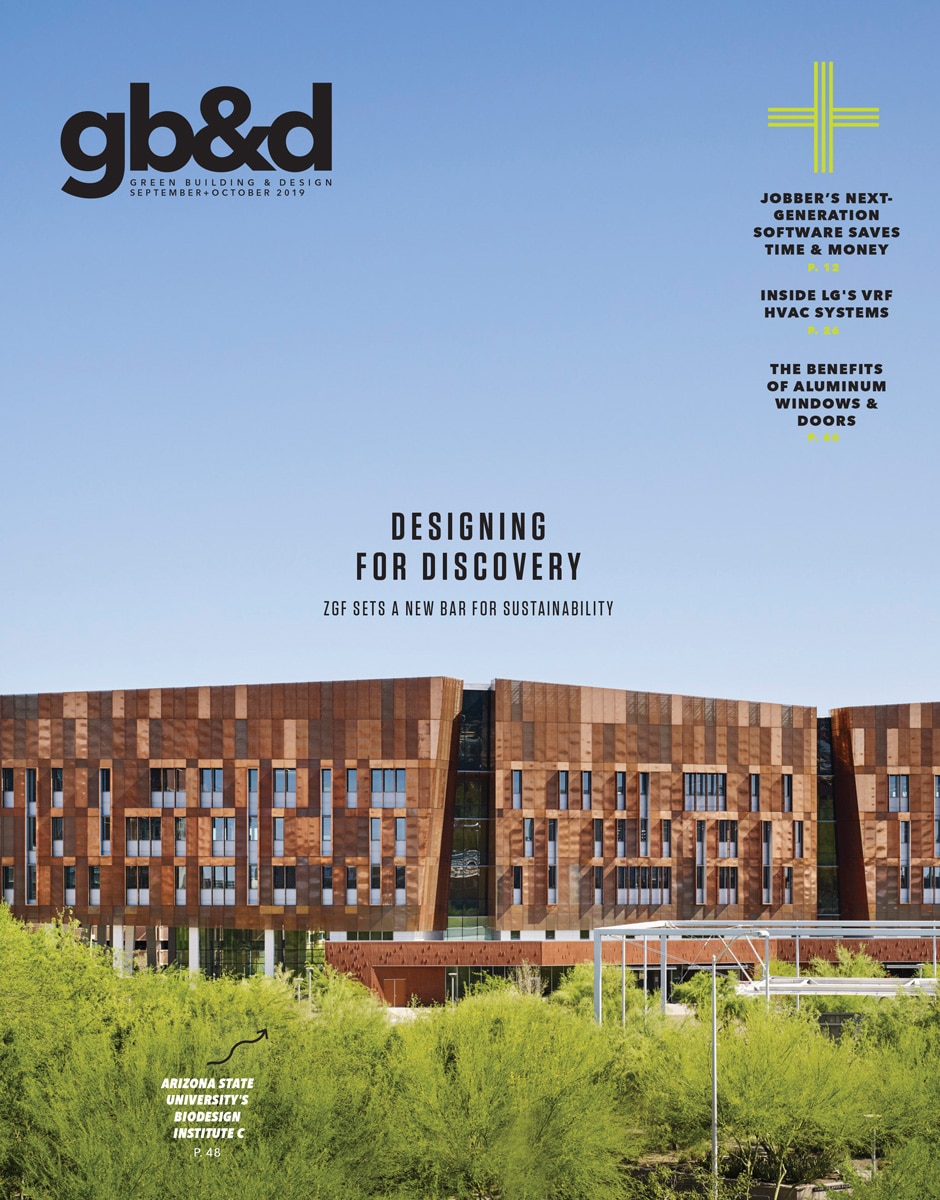
[Photo: Courtesy of EZ-ACCESS]

Do it right the first time—it could easily be Don Everard’s mantra. The CEO of aluminum ramping manufacturer EZ-ACCESS has spent a career fixing, tweaking, and promoting accessibility features for buildings across the country. He and his team have replaced numerous poorly designed ramps made of deteriorating materials with state-of-the-art aluminum products that fit buildings and their occupants’ lifestyles. After more than 30 years in business and with locations in Washington state and Kentucky, Everard and the EZ-ACCESS team have developed access solutions to meet most, if not all, federal access requirements and associated local building codes. Today the company is poised to expand even further into the accessibility market. Everard explains the full value of making sure your ramps are ADA-compliant.
We all know someone who is blind, hearing impaired, or unable to walk without assistance. The Americans with Disabilities Act (ADA) was the country’s response to identifying the daily struggles for disabled people and our need as a nation to provide inclusion to everyday activities.
The ADA is a civil rights law that, in part, ensures public and commercial spaces are accessible to all. But that doesn’t mean a small business or historic building needs to find the money and the space to install an elevator. Different types of buildings have different requirements, and aluminum ramps offer solutions to meet these requirements both sustainably and cost-effectively. The material is recyclable, reusable, and, perhaps most importantly, far more durable than other materials.

[Photo: Courtesy of EZ-ACCESS]
In the end it’s important to remember the ADA is a civil rights law, and noncompliance can be met with a civil lawsuit. On the other side of compliance, we have usability and liability from unmaintained accessibility structures. Exposure to civil or liability lawsuits could cost a company hundreds to thousands to hundreds of thousands of dollars. The cost of ADA compliance is a small fraction of that, and frankly businesses can’t afford not to be compliant.
Beyond the bottom line, your business is about people. And people need access. People are mobile with wheelchairs and canes. They’re hearing impaired or visually impaired. Accommodating all walks and all people is just good business.

